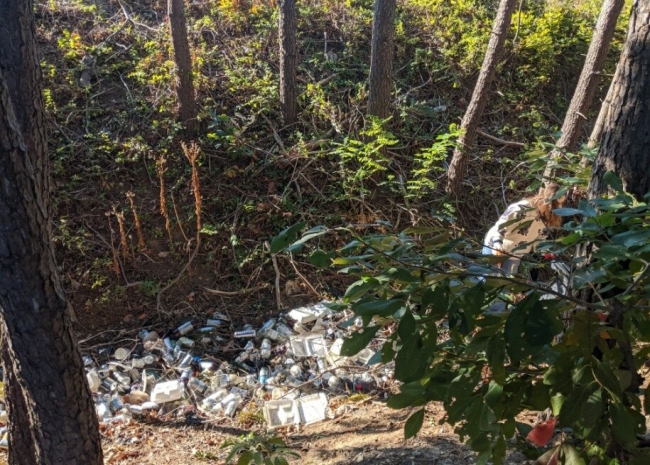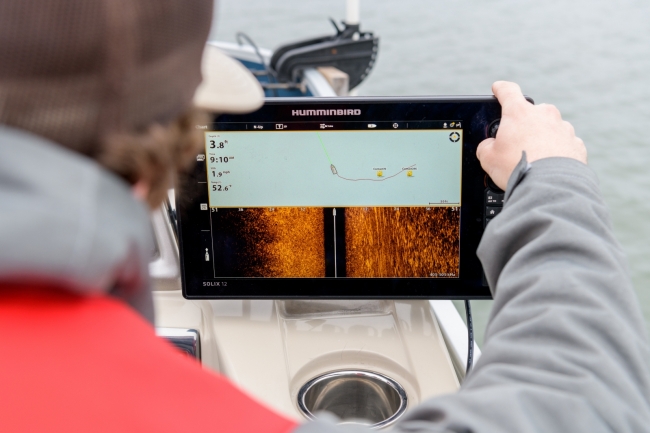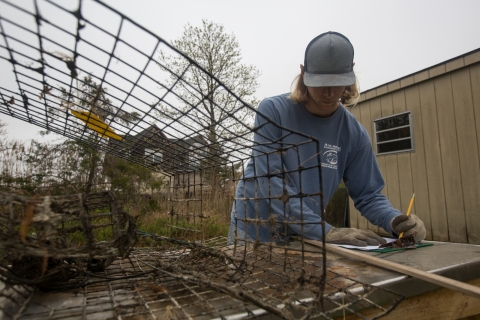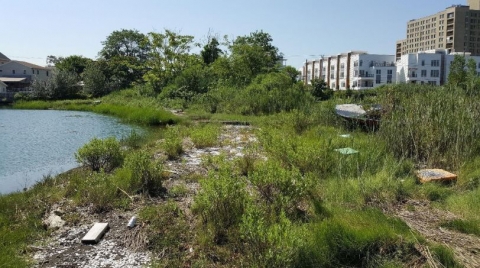The Mid-Atlantic region, which includes Delaware, Maryland, New Jersey, New York, Virginia, and the District of Columbia, is home to varied industries, large urban cities, and beaches popular for tourism. Our partners are working hard to keep the coast clean to conserve all that we love about the Mid-Atlantic. Seven prevention and removal projects supported by the NOAA Marine Debris Program are currently underway in the Mid-Atlantic, spanning issues from single-use plastics and consumer debris, to abandoned and derelict fishing gear and vessels.
A key step to address marine debris is to prevent items from becoming debris in the first place.In Prince William County, Virginia, partners at George Mason University and Keep Prince William Beautiful are leading a project to build marine debris awareness and change water bottle use behavior of high school students in an effort to reduce single-use plastics. In two high schools, students will develop initiatives to collect water bottle usage data, increase peer commitments in support of reusable bottles, and lead social media campaigns. Across the region, the Mid-Atlantic Regional Ocean Council on the Ocean, in collaboration with the Coastal States Stewardship Foundation, is addressing the dangers that balloons pose to ocean and coastal wildlife. Through a community-based social marketing campaign, they are engaging with regional aquariums and residents to change behaviors related to balloon releases throughout the Mid-Atlantic.
In Maryland, the Alice Ferguson Foundation partnered with teachers from high schools to engage over 500 students who created eight student-led action plans and mentored younger students in their communities. Over this past year they’ve also adapted their removal efforts to small-scale clean-ups in the community. Also in Maryland, partners at Prince George County are leading efforts to install consumer debris trash traps along the Anacostia River watershed and create educational materials that teach K-12 students about the local impacts of debris in waterways.
In addition to stopping debris at the source, partners are working hard to remove debris from the coast and marine environment. Partners at University of Delaware are using sonar and artificial intelligence technology to locate derelict recreational crab pots in the Indian River Bay, Delaware. This project’s innovative approach will help identify how acoustic mapping efforts can be used to support volunteer trap removal “round up” events planned for early 2022 during the closed blue crab season. In southern New Jersey, Stockton University scientists have engaged with commercial crabbers to break the cycle of derelict crab trap loss. The project pairs next generation crabbers with experienced crabbers who can provide mentoring, financial assistance, and low-cost technology. To date they have removed over 1,000 lost traps. New York City Parks and Recreation is working in Jamaica Bay to remove medium and large debris, including derelict vessels, coordinate volunteers to remove smaller debris, and conduct pre- and post-removal monitoring to assess improvements to the salt marsh habitat.
From prevention to removal, partners are working hard to raise awareness and engage new audiences, while seeking solutions to keep our ocean and waterways clean. Stay tuned this week on the NOAA Marine Debris Program blog to learn more about using acoustic mapping to locate lost crab pots in Delaware!





